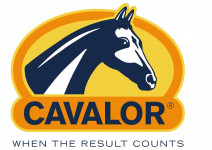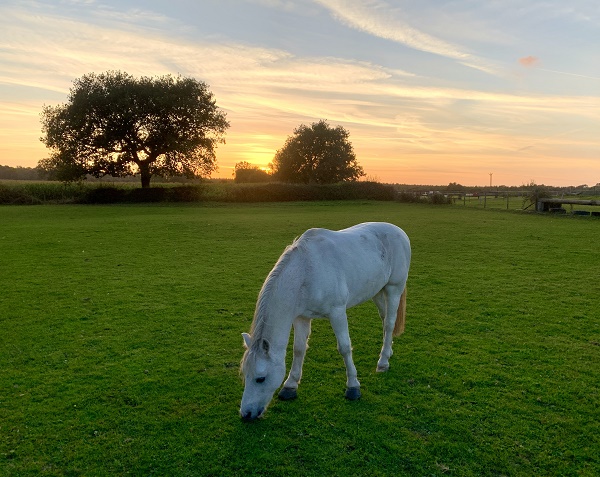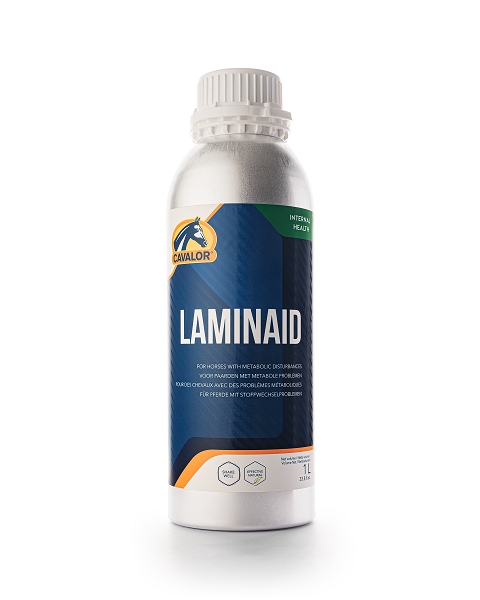Posted: 18th March 2021 | Back to news feed

In this article Cavalor Equine Nutritionist, Fien Demeyere provides advice on caring for the laminitic horse and pony.
1. What are the typical signs of laminitis?
When horses suffer from laminitis the main symptom is painful hooves. This causes difficulties in turning, and many show a typical laminitic stance leaning back on to their hind legs and having a short and painful walk.
The inflammation also causes increased hoof temperature and horses with laminitis are more prone to white line disease and blisters.
2. What lifestyle should be adopted for the laminitic?
The most important way to prevent laminitis is to monitor the horse’s feed, especially for fructans, the sugars found in grasses.
Along with fructans, avoid sugar and starch (max 1g/kg body weight per meal for ID horses and max 1.5g – 2,5 /kg body weight per meal for healthy horses) and excess protein. Sensitive horses need to be fed most of their energy in the form of fibre and fats. Dry hay, beet pulp, lucerne, and oils can be used here. Limit the amounts of sugar and starch in the feed ration. In addition to changes to feeding, it is also important that the horse’s digestive system and metabolism is supported and the production of certain hormones be kept in balance.

Horses prone to laminitis should not be turned out to pasture abruptly or excessively. Horses that have had laminitis in the past should not be turned out in pastures that are too rich, as this often leads to weight gain. However even barren pastures can lead to problems, so always pay attention to the fructan content of the grass when choosing the right time to turn out. Grass is highest in fructans in the afternoons and during times when nights are cold and days are sunny (spring and autumn).
If, despite all preventive measures, the horse develops laminitis, it is important to treat the pain as quickly as possible, to stimulate the lymphatic system and the blood circulation in the foot and to stop the inflammatory reaction from spreading.
Make the horse as comfortable as possible by providing a soft surface in its box, for example a thick layer of sawdust or straw. You can also provide temporary relief by cooling the horse’s feet with cold water. As soon as they are comfortable enough to walk, they should move as much as possible.
Extra hoof care is also recommended. Customised shoes and products for external application can also provide relief and accelerate the recovery of the hoof.
Regular visits from the farrier are also important.
3. How should feeding and diet be adapted?
Use concentrates that are low in sugar and starch. Cavalor FiberForce is high in fiber and contains only 3% starch and 5% sugar, which makes it ideal for horses that have metabolic issues.
Is your horse too fat and do you want him to lose weight? Cavalor Silhouette is also low in sugar and starch but has a higher amount of protein. It is specially designed for horses to lose weight safely and encourages loss of fat but no loss of muscle.
Horses that are prone to laminitis need a total approach where feeding, management and movement are considered.
Be careful with pasture that is rich in fructans and protein when your horse is prone to laminitis. Especially on cold and sunny days, the amount of fructans in grass can be quite high. Roughage is the main part of your horse’s diet. Use dry and fibrous hay that is low in sugar.

Cavalor LaminAid is an oral supplement and speeds up the circulation and supports the metabolism and digestion management of sensitive hooves and metabolic problems whilst protecting the cells against free radicals. The oils in Cavalor LaminAid are also attributed with antioxidant properties to inhibit the production of free radicals and promote tissue repair in the hoof.
4. Is it as condition that comes on in old age?
Laminitis is one of the diseases of the EMS (Equine Metabolic Syndrome).
A horse with EMS is always more prone to laminits. PPID (Cushings), which is also part of EMS is a disease we mainly see in older horses and ponies. Horses with PPID are more prone to laminitis.
5. Are obese horses and ponies more prone to laminitis?
Horses that are overweight or have Equine Metabolic Syndrome, have abnormal fat metabolism which further contributes to changes in hormone production including insulin as well as alterations in immune function. This also makes them more prone to laminitis.
6.Should exercise be carried out?
If they are comfortable enough to walk, they should move as much as possible. This will be beneficial for the blood circulation towards the hoof as well as mush as for the weight loss.
For further information contact Cavalor Direct FREE on (0800) 133 7483 or visit www.cavalordirect.co.uk
The Equestrian Index newsfeed is compiled from articles submitted by advertising members and expresses the opinions of those members. Watsons Directories Ltd shall not be held liable for any inaccuracies or mis-statements therein.